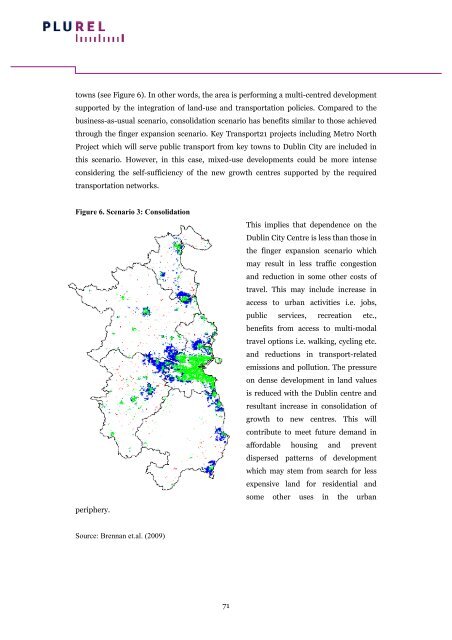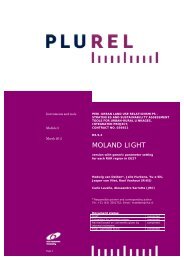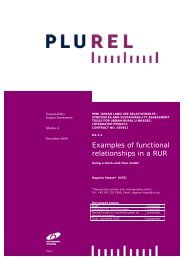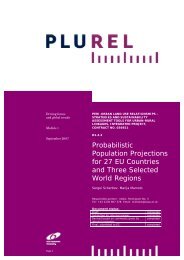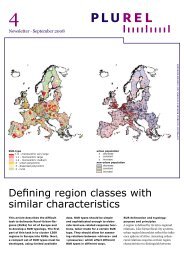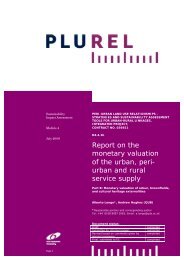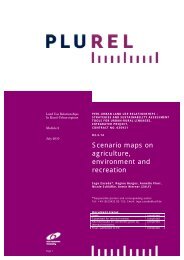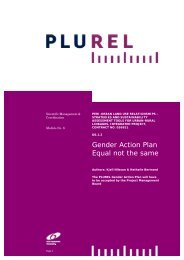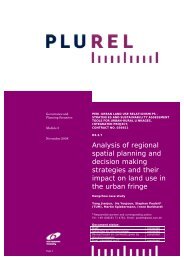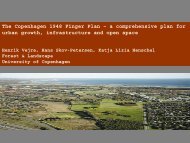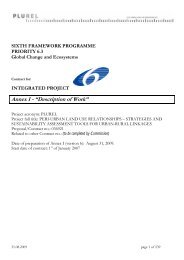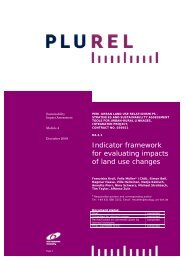Cost benefit analysis of peri-urban land use policy - Plurel
Cost benefit analysis of peri-urban land use policy - Plurel
Cost benefit analysis of peri-urban land use policy - Plurel
You also want an ePaper? Increase the reach of your titles
YUMPU automatically turns print PDFs into web optimized ePapers that Google loves.
towns (see Figure 6). In other words, the area is performing a multi-centred development<br />
supported by the integration <strong>of</strong> <strong>land</strong>-<strong>use</strong> and transportation policies. Compared to the<br />
business-as-usual scenario, consolidation scenario has <strong>benefit</strong>s similar to those achieved<br />
through the finger expansion scenario. Key Transport21 projects including Metro North<br />
Project which will serve public transport from key towns to Dublin City are included in<br />
this scenario. However, in this case, mixed-<strong>use</strong> developments could be more intense<br />
considering the self-sufficiency <strong>of</strong> the new growth centres supported by the required<br />
transportation networks.<br />
Figure 6. Scenario 3: Consolidation<br />
<strong>peri</strong>phery.<br />
This implies that dependence on the<br />
Dublin City Centre is less than those in<br />
the finger expansion scenario which<br />
may result in less traffic congestion<br />
and reduction in some other costs <strong>of</strong><br />
travel. This may include increase in<br />
access to <strong>urban</strong> activities i.e. jobs,<br />
public services, recreation etc.,<br />
<strong>benefit</strong>s from access to multi-modal<br />
travel options i.e. walking, cycling etc.<br />
and reductions in transport-related<br />
emissions and pollution. The pressure<br />
on dense development in <strong>land</strong> values<br />
is reduced with the Dublin centre and<br />
resultant increase in consolidation <strong>of</strong><br />
growth to new centres. This will<br />
contribute to meet future demand in<br />
affordable housing and prevent<br />
dispersed patterns <strong>of</strong> development<br />
which may stem from search for less<br />
expensive <strong>land</strong> for residential and<br />
some other <strong>use</strong>s in the <strong>urban</strong><br />
Source: Brennan et.al. (2009)<br />
71


